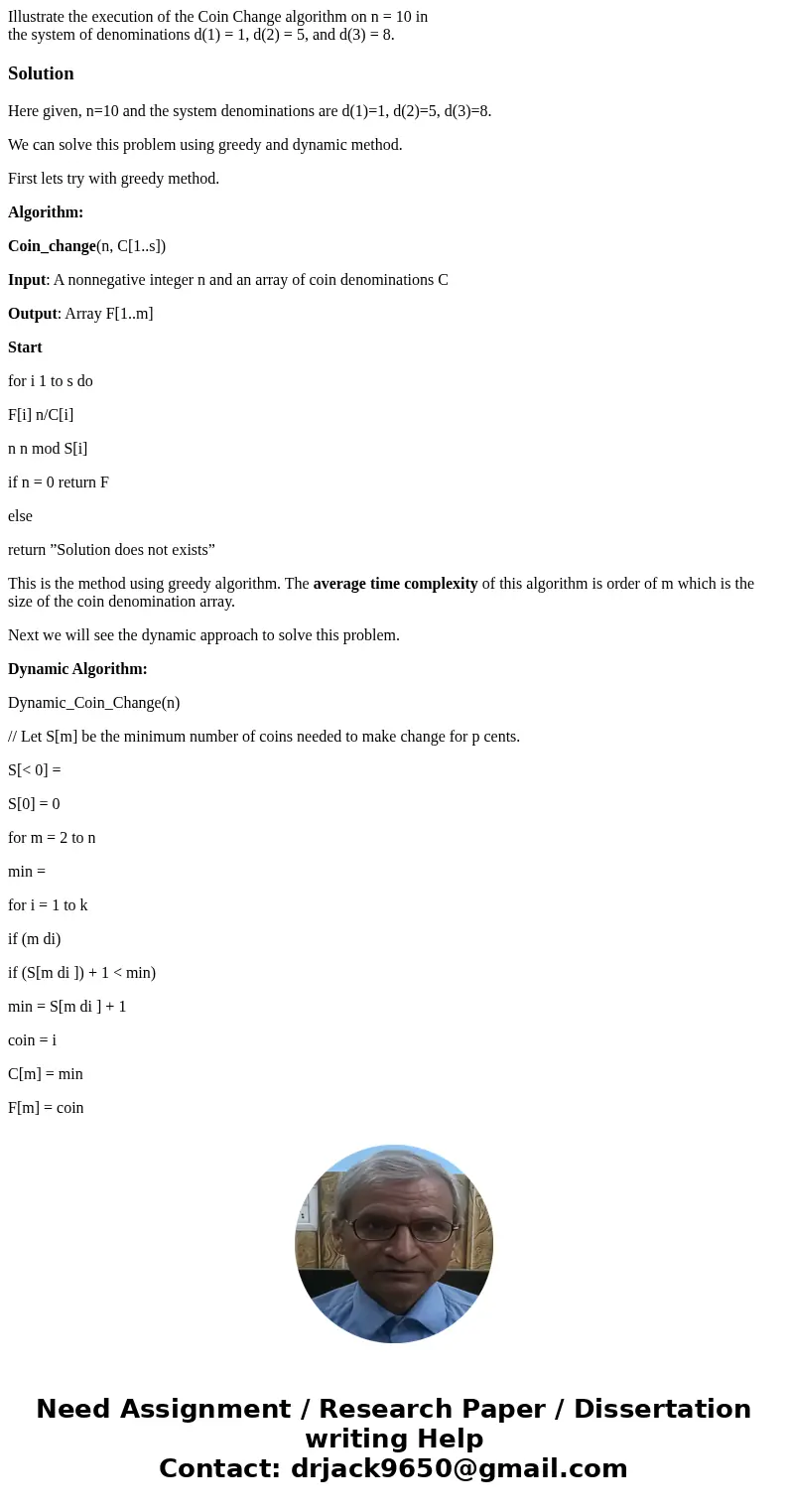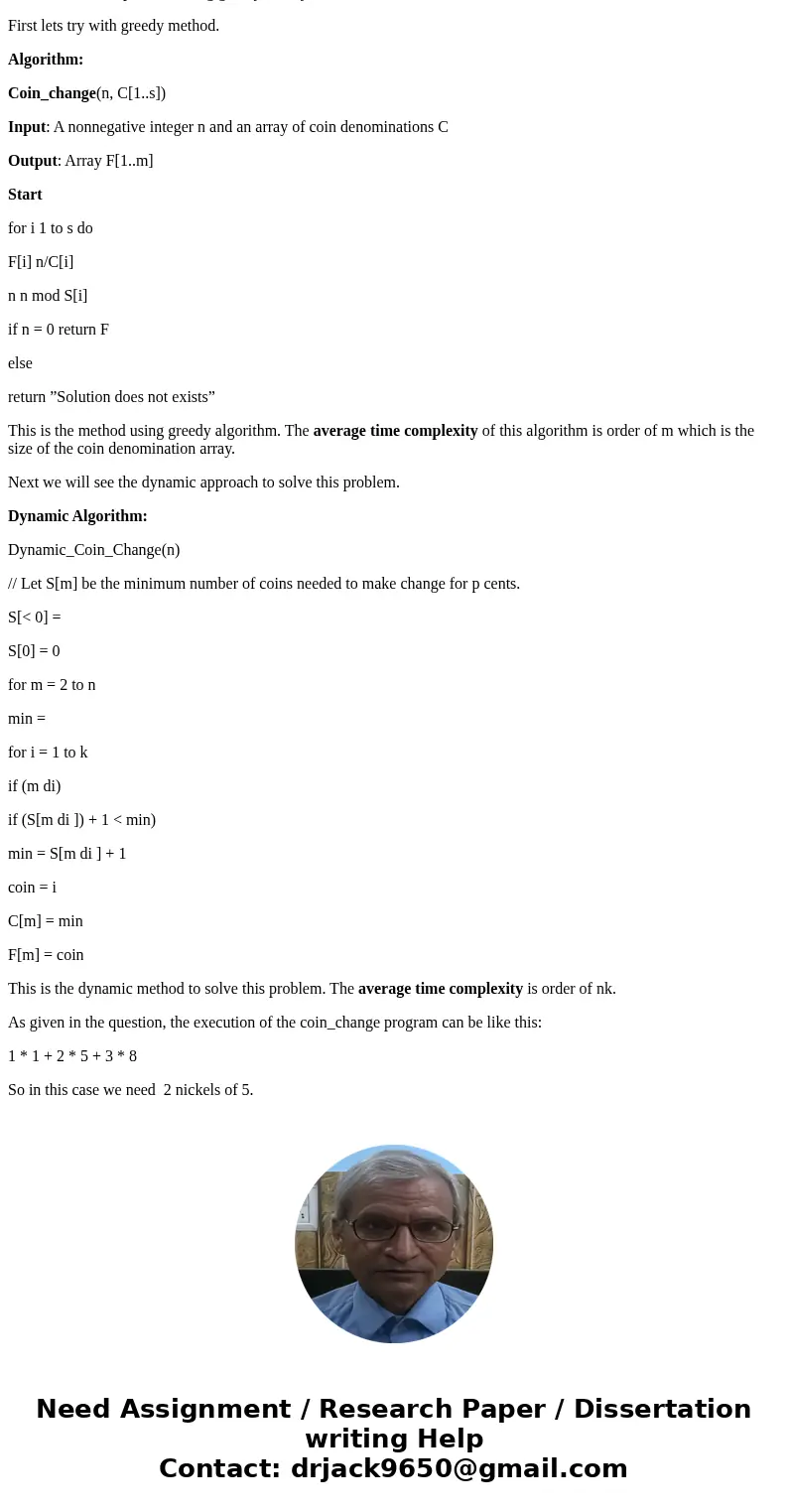Illustrate the execution of the Coin Change algorithm on n
Illustrate the execution of the Coin Change algorithm on n = 10 in
the system of denominations d(1) = 1, d(2) = 5, and d(3) = 8.
Solution
Here given, n=10 and the system denominations are d(1)=1, d(2)=5, d(3)=8.
We can solve this problem using greedy and dynamic method.
First lets try with greedy method.
Algorithm:
Coin_change(n, C[1..s])
Input: A nonnegative integer n and an array of coin denominations C
Output: Array F[1..m]
Start
for i 1 to s do
F[i] n/C[i]
n n mod S[i]
if n = 0 return F
else
return ”Solution does not exists”
This is the method using greedy algorithm. The average time complexity of this algorithm is order of m which is the size of the coin denomination array.
Next we will see the dynamic approach to solve this problem.
Dynamic Algorithm:
Dynamic_Coin_Change(n)
// Let S[m] be the minimum number of coins needed to make change for p cents.
S[< 0] =
S[0] = 0
for m = 2 to n
min =
for i = 1 to k
if (m di)
if (S[m di ]) + 1 < min)
min = S[m di ] + 1
coin = i
C[m] = min
F[m] = coin
This is the dynamic method to solve this problem. The average time complexity is order of nk.
As given in the question, the execution of the coin_change program can be like this:
1 * 1 + 2 * 5 + 3 * 8
So in this case we need 2 nickels of 5.


 Homework Sourse
Homework Sourse